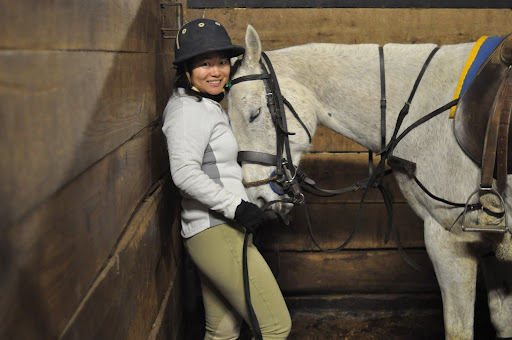Liang Zhang
age ~75
from Menlo Park, CA
- Also known as:
-
- Lian G Zhang
- Phone and address:
- 507 Concord Dr, Menlo Park, CA 94025
Liang Zhang Phones & Addresses
- 507 Concord Dr, Menlo Park, CA 94025
- Bayside Hills, NY
- 5831 218Th St, Oakland Gdns, NY 11364 • (718)2251366
- Bayside Hills, NY
Lawyers & Attorneys

Liang Zhang - Lawyer
view sourceAddress:
Shulun & Partners (Shanghai) Law Firm
Licenses:
New York - Due to reregister within 30 days of birthday 2011
Education:
Chicago-Kent College of Law, Iit

Liang Zhang - Lawyer
view sourceOffice:
Davis Polk & Wardwell LLP
Specialties:
Tax
ISLN:
1000248654
Admitted:
2017
University:
Lafayette College, B.S., 2013
Law School:
Harvard Law School, J.D., 2016
License Records
Liang Huan Zhang
Address:
Flushing, NY
License #:
013351
Category:
Clinical Laboratory Technologist
Issued Date:
May 21, 2008
Type:
CLINICAL LABORATORY TECHNOLOGIST
Name / Title
Company / Classification
Phones & Addresses
Director
PALMER COLLEGE OF CHIROPRACTIC WEST
College/University · Colleges, Universities, and Professional Schools
College/University · Colleges, Universities, and Professional Schools
90 E Tasman Dr, San Jose, CA 95134
1000 Brady St, Davenport, IA 52803
(408)9446000, (408)9446023
1000 Brady St, Davenport, IA 52803
(408)9446000, (408)9446023
Principal
One Chimi Sushi
Eating Place
Eating Place
207 E 26 St, New York, NY 10010
(212)5328788
(212)5328788
WORLD PRESS GROUP, INC
18 Helena Dr, Chappaqua, NY 10514
Certified E Business Planner 5 Peachtree Dr Bus Ctr, Cortlandt Manor, NY 10567
Certified E Business Planner 5 Peachtree Dr Bus Ctr, Cortlandt Manor, NY 10567
JACKIE DRAGON LLC
VETECH SYSTEMS CORP
Business Services
Business Services
218-14 Northern Blvd #209, Bayside, NY 11361
21814 Nthrn Blvd, Flushing, NY 11361
525 Northern Blvd, Flushing, NY 11361
21814 Nthrn Blvd, Flushing, NY 11361
525 Northern Blvd, Flushing, NY 11361
Principal
SUNSHINE USA INC
Eating Place
Eating Place
36 W 48 St, New York, NY 10036
Chief Executive Officer
Liang Ye Wu
Eating Place
Eating Place
36 W 48 St, New York, NY 10036
JACKIE MISO, LLC
Isbn (Books And Publications)

Proceedings of the Twentieth International Cryogenic Engineering Conference (ICEC 20): Beijing, China, 11-14 May 2004
view sourceAuthor
Liang Zhang
ISBN #
0080445594

La Naissance Du Concept De Patrimoine En Chine: XIX-XXe Siecles
view sourceAuthor
Liang Zhang
ISBN #
2862220477
Resumes

Liang Zhang Daytona Beach, FL
view sourceWork:
SpaceX
Hawthorne, CA
Jan 2013 to Jul 2013
Avionics/Hardware Design Intern Air Force Research Laboratories
Rome, NY
Apr 2012 to Aug 2012
Engineering/Research Analyst Intern dB Control
Fremont, CA
Apr 2009 to Apr 2010
Electronics Technician
Hawthorne, CA
Jan 2013 to Jul 2013
Avionics/Hardware Design Intern Air Force Research Laboratories
Rome, NY
Apr 2012 to Aug 2012
Engineering/Research Analyst Intern dB Control
Fremont, CA
Apr 2009 to Apr 2010
Electronics Technician
Education:
University of California
Irvine, CA
2009
B.S. in Electrical Engineering Embry-Riddle Aeronautical University
Daytona Beach, FL
M.S. in Electrical and Computer Engineering
Irvine, CA
2009
B.S. in Electrical Engineering Embry-Riddle Aeronautical University
Daytona Beach, FL
M.S. in Electrical and Computer Engineering

Liang Zhang Brooklyn, NY
view sourceWork:
Center for Biomedical Imaging
New York, NY
May 2012 to Feb 2013
Research Assistant State Key Lab of High Power Vacuum Electronics
Oct 2010 to May 2011
Research Assistant
New York, NY
May 2012 to Feb 2013
Research Assistant State Key Lab of High Power Vacuum Electronics
Oct 2010 to May 2011
Research Assistant
Education:
New York University
Brooklyn, NY
May 2013
Master of Engineering in Electrical and Computer Engineering University of Electronic Science and Technology of China
Chengdu, CN
Jun 2011
Bachelor of Engineering in Vacuum Electronic Technology
Brooklyn, NY
May 2013
Master of Engineering in Electrical and Computer Engineering University of Electronic Science and Technology of China
Chengdu, CN
Jun 2011
Bachelor of Engineering in Vacuum Electronic Technology

Liang Zhang San Lorenzo, CA
view sourceWork:
Golden Gate Optical Manufacture
Hayward, CA
Sep 2008 to Jan 2012
Shift manager and new employee trainer Internet seller
Jan 2006 to Sep 2008
Hayward, CA
Sep 2008 to Jan 2012
Shift manager and new employee trainer Internet seller
Jan 2006 to Sep 2008
Education:
City College of San Francisco
San Francisco, CA
May 2012
Associate in Biological Science
San Francisco, CA
May 2012
Associate in Biological Science
Medicine Doctors

Dr. Liang Zhang, Brooklyn NY - MD (Doctor of Medicine)
view sourceSpecialties:
Anesthesiology
Address:
450 Clarkson Ave, Brooklyn, NY 11203
(319)4002745 (Phone)
(319)4002745 (Phone)
Languages:
English

Liang Zhang
view sourceSpecialties:
Anesthesiology
Work:
Covenant Home Center Operating Room
3421 W 9 St FL 2, Waterloo, IA 50702
(319)2728000 (phone), (319)2727313 (fax)
3421 W 9 St FL 2, Waterloo, IA 50702
(319)2728000 (phone), (319)2727313 (fax)
Languages:
English
Description:
Dr. Zhang works in Waterloo, IA and specializes in Anesthesiology. Dr. Zhang is affiliated with Covenant Medical Center.

Liang Zhang
view source
Liang Zhang
view sourceUs Patents
-
Method And Apparatus For Checking Read Errors With Two Cyclic Redundancy Check Stages
view source -
US Patent:6868517, Mar 15, 2005
-
Filed:Apr 8, 2002
-
Appl. No.:10/118504
-
Inventors:Weishi Feng - San Jose CA, US
Liang Zhang - Union City CA, US
Zhan Yu - Sunnyvale CA, US -
Assignee:Marvell International Ltd. - Hamilton
-
International Classification:H03M013/29
H03M013/23 -
US Classification:714758, 714763, 714765, 714769, 714781
-
Abstract:Method and apparatus for detecting errors in data read from a data storage medium include an error correction step/device which receives at least one of (i) data and (ii) data with errors, from the data storage medium, and outputs an error sequence in a first order in the case where data with errors is received. A first CRC step/device receives the at least one of (i) data and (ii) data with errors from the data storage medium, and outputs a CRC checksum in a second order different from said first order. A second CRC step/device receives both the error sequence and the CRC checksum, and outputs another CRC checksum indicative of whether the correction device or step has generated a correct error sequence. Preferably, a first CRC is coupled parallel to a Reed-Soloman decoder, and a second CRC is coupled in series with the first CRC and so as to receive the output of the R-S decoder. The second CRC will thus be able to detect errors in the output of the R-S decoder, and provide an error signal which will cause the erroneous data to be reread.
-
Evaluating A Validation Vector For Validating A Network Design
view source -
US Patent:6877141, Apr 5, 2005
-
Filed:Apr 1, 2003
-
Appl. No.:10/405767
-
Inventors:Indradeep Ghosh - San Jose CA, US
Koichiro Takayama - Cupertino CA, US
Liang Zhang - Blacksburg VA, US -
Assignee:Fujitsu Limited - Kawasaki
-
International Classification:G06F017/50
-
US Classification:716 4, 716 5, 716 18
-
Abstract:Evaluating a validation vector includes receiving a network having nodes and a target set that includes one or more nodes of the network. The following steps are repeated until the nodes of the target set have been selected. A node is selected from the target set, and a tag is assigned to the node, where the tag represents an error of a value of a variable corresponding to the node. A test environment specifying a propagation path from an input, through the node, and to an output is generated. The test environment is translated into a validation vector, and the tag is propagated to the output according to the validation vector. After repeating the steps, coverage for the validation vectors is determined in accordance with the propagation to evaluate the one or more validation vectors.
-
Method And Apparatus For Integrating Hyperlinks In Video
view source -
US Patent:6912726, Jun 28, 2005
-
Filed:Apr 2, 1997
-
Appl. No.:09/091604
-
Inventors:Jeane Chen - Chappaqua NY, US
Ephraim Feig - Chappaqua NY, US
Liang Jie Zhang - White Plains NY, US -
Assignee:International Business Machines Corporation - Armonk NY
-
International Classification:G06T001/00
H04N007/10
H04N005/04 -
US Classification:725113, 725112, 725135, 345760
-
Abstract:Hypervideo data is encoded with two distinct portions, a first portion which contains the video data and a second portion, typically much smaller than the first, which contains hyperlink information associated with the video data. Preferably, the first and second portions are stored in separate and distinct files. The encoding of the hyperlink information is preferably made efficient by encoding only key frames of the video, and by encoding hot link regions of simple geometries. A hypervideo player determines the hot link regions in frames between key frames by interpolating the hot link regions in key frames which sandwich those frames.
-
Generating A Test Environment For Validating A Network Design
view source -
US Patent:7139929, Nov 21, 2006
-
Filed:Apr 1, 2003
-
Appl. No.:10/405768
-
Inventors:Indradeep Ghosh - San Jose CA, US
Liang Zhang - Blacksburg VA, US -
Assignee:Fujitsu Limited - Kawasaki
-
International Classification:G06F 11/00
-
US Classification:714 4
-
Abstract:Generating a test environment includes accessing initial test environments for a network of nodes, where a test environment specifies a propagation or justification path for a node. The following are repeated until satisfactory coverage is achieved or until a predetermined number of iterations is reached. A coverage for each test environment is calculated, and at least two of the test environments are mated to generate next test environments, where the coverage of the at least two test environments is greater than the coverage of the other test environments.
-
Propagating An Error Through A Network
view source -
US Patent:7168014, Jan 23, 2007
-
Filed:Apr 1, 2003
-
Appl. No.:10/405766
-
Inventors:Indradeep Ghosh - San Jose CA, US
Koichiro Takayama - Cupertino CA, US
Liang Zhang - Blacksburg VA, US -
Assignee:Fujitsu Limited - Kawasaki
-
International Classification:G01R 31/28
-
US Classification:714712, 716 4
-
Abstract:Propagating an error through a network includes receiving a network having propagation paths and nodes, where a propagation path has one or more nodes and a node is associated with a variable operable to have a value during simulation. A tag of a tag set is assigned to the value. The tag set includes at least two signed tags, positive tag representing a positive error and a negative tag representing a negative error, and an unsigned tag representing an error having an unknown sign. The tag is propagated along the propagation path to yield intermediate tags, where at least one intermediate tag is an unsigned tag formed from at least two signed tags. A final tag is determined in accordance with the intermediate tags in order to propagate an error through the network.
-
Method And Apparatus For Checking Read Errors With Two Cyclic Redundancy Check Stages
view source -
US Patent:7310765, Dec 18, 2007
-
Filed:Feb 4, 2005
-
Appl. No.:11/049753
-
Inventors:Weishi Feng - San Jose CA, US
Liang Zhang - Union City CA, US
Zhan Yu - Sunnyvale CA, US -
Assignee:Marvell International Ltd. - Hamilton
-
International Classification:H03M 13/23
H03M 13/29 -
US Classification:714763, 714758, 714765, 714781
-
Abstract:A system for detecting errors in received input data includes a first error detection circuit. The first error detection circuit is configured to receive the input data. The input data includes at least one of data and data with errors. The first error detection circuit is configured to generate a first error detection sequence in a first order. The system includes a second error detection circuit. The second error detection circuit is configured to receive the first error detection sequence and an error sequence. The error sequence is received in a second order that is different from the first order when there is data with errors. The second error detection circuit is configured to generate a second error detection sequence that indicates whether the error sequence is generated correctly.
-
Clustering Cookies For Identifying Unique Mobile Devices
view source -
US Patent:8396822, Mar 12, 2013
-
Filed:Dec 23, 2010
-
Appl. No.:12/978186
-
Inventors:Anirban Dasgupta - Berkeley CA, US
Liang Zhang - Fremont CA, US
Maxim Gurevich - Cupertino CA, US
Achint Oommen Thomas - Buffalo NY, US
Belle Tseng - Cupertino CA, US -
Assignee:Yahoo! Inc. - Sunnyvale CA
-
International Classification:G06N 5/02
-
US Classification:706 50
-
Abstract:Embodiments are directed towards clustering cookies for identifying unique mobile devices for associating activities over a network with a given mobile device. The cookies are clustered based on a Bayes Factor similarity model that is trained from cookie features of known mobile devices. The clusters may be used to determine the number of unique mobile devices that access a website. The clusters may also be used to provide targeted content to each unique mobile device.
-
System And Method For Counting Network Users
view source -
US Patent:20120144016, Jun 7, 2012
-
Filed:Dec 2, 2010
-
Appl. No.:12/959069
-
Inventors:Liang ZHANG - Santa Clara CA, US
Anirban DASGUPTA - Albany CA, US
Belle L. TSENG - Cupertino CA, US
Benjamin GRAHAM - Sunnyvale CA, US
Arun A. PRAKASH - Bangalore, IN -
Assignee:YAHOO! INC - Sunnyvale CA
-
International Classification:G06F 15/173
-
US Classification:709224
-
Abstract:Embodiments presented herein provide methods, systems and computer program products for determining a count of network users. One method identifies one or more login access requests, from one or more server logs. Each of the one or more login access requests comprises a login cookie, and a user identifier. The method then forms one or more connected components based on the one or more login access requests. Each connected component comprises one or more user identifiers, wherein each of the one or more user identifiers is associated with one or more login cookies. The method finally determines a count of login users based, at least in part, on the user identifiers in the one or more connected components.
Youtube
Googleplus

Liang Zhang
Lived:
San Francisco, CA
London, UK
Barcelona, Spain
Beijing, China
London, UK
Barcelona, Spain
Beijing, China
Work:
AnswerLab - Consultant (2010)
LinkedIn - User Experience Researcher (2009-2010)
HSBC - Senior Marketing Analyst (2006-2008)
LinkedIn - User Experience Researcher (2009-2010)
HSBC - Senior Marketing Analyst (2006-2008)
Education:
University of California, Berkeley - Economics, London School of Economics - International Management

Liang Zhang
Lived:
Brooklyn, New York
Toronto, Canada
Galveston, Texas
London, UK
Lake Placid, New York
Tianjin, China
Toronto, Canada
Galveston, Texas
London, UK
Lake Placid, New York
Tianjin, China
Work:
HUGE - Associate Design Director (2005)

Liang Zhang
Education:
Universiteit van Tilburg, Peking University, Harbin Institute of Technology
Tagline:
I have an attitude and I know how to use it.

Liang Zhang
Education:
Harbin Institute of Technology

Liang Zhang
Lived:
Brooklyn, new york
Education:
New York University

Liang Zhang
Work:
Spun Tech Industry - Summer Intern
Education:
North Carolina State University

Liang Zhang
Education:
Yale University

Liang Zhang
Education:
Yale University
Flickr
Myspace
Plaxo

Zhang Liang
view sourceNottingham, UKPast: Nokia Siemens Networks, Siemens Communications, Huawei Technologies, UTStarcom, ...

zhang liang
view sourcehangzhou一个感性的完美主义者

Zhang Dg Liang
view source
Dg Liang Zhang
view source
Liang Ivy Zhang
view source
Zhang Liang
view source
Liang Tom Zhang
view source
Lim Liang Zhang
view source
Wen Liang Zhang
view source
Liang Zhang
view sourceClassmates

Liang Zhang
view sourceSchools:
Albert Enstine High School Wheaton MD 1993-1997
Community:
Frances Hunt, Sonia Carpenter, Stuart Harris, Barry Mitzner

Liang Zhang
view sourceSchools:
Shanghai American School Shanghai China 1998-2000
Community:
David Giedt, Glenda Case, Raazia Bokhari, Eugene Wu

Liang Zhang
view sourceSchools:
Zhejiang University Hangzhou China 1993-1997
Community:
Lisa Chen, Feng Feng, Dongwei Wang, Wu Hai

Liang Zhang (Hongchen)
view sourceSchools:
Beijing Bayi High School Beijing China 1992-1996

Liang Zhang
view sourceSchools:
Cleveland Hill Elementary School Cheektowaga NY 1993-1996
Get Report for Liang Zhang from Menlo Park, CA, age ~75














